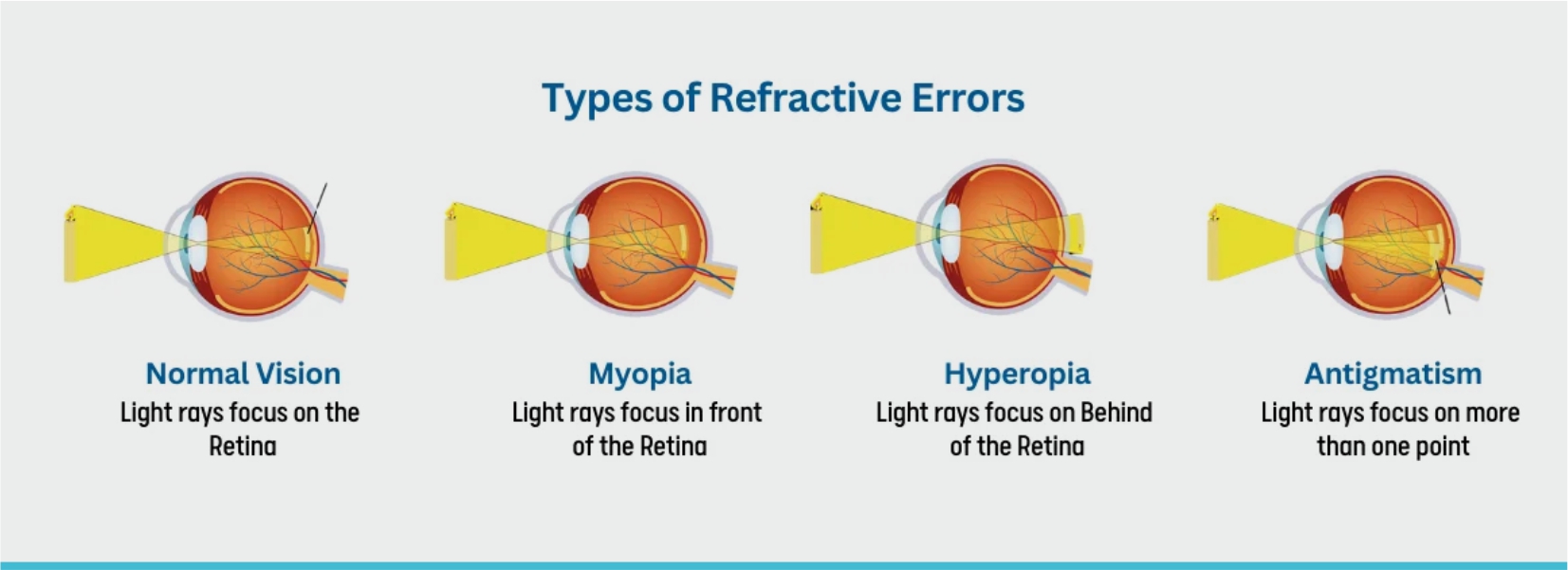Introduction
 Since 2000, Tej Eye Center has been
performing refractive surgery.
Dr. Tejal Dalal, M.S., an ophthalmic
surgeon, is the Founder and
Medical Director of Tej Eye Center and is a
renowned leader in
refractive surgery. She is a member of
American Society of Cataract
and Refractive Surgery (ASCRS) and Trusted
by many families for our
advanced Bladeless LASIK and customized
refractive Cataract
Surgery.
Since 2000, Tej Eye Center has been
performing refractive surgery.
Dr. Tejal Dalal, M.S., an ophthalmic
surgeon, is the Founder and
Medical Director of Tej Eye Center and is a
renowned leader in
refractive surgery. She is a member of
American Society of Cataract
and Refractive Surgery (ASCRS) and Trusted
by many families for our
advanced Bladeless LASIK and customized
refractive Cataract
Surgery.
 She has
more than 20 years experience in vision care
and has
performed many of procedures ranging from
LASIK, Iris registration
and cutomvue lasik and now a days many more
BLADLESS laser
surgery. In fact, Tej Eye Center has an
international reputation with
patients coming from abroad specially for
Bladless LASIK
She has
more than 20 years experience in vision care
and has
performed many of procedures ranging from
LASIK, Iris registration
and cutomvue lasik and now a days many more
BLADLESS laser
surgery. In fact, Tej Eye Center has an
international reputation with
patients coming from abroad specially for
Bladless LASIK
 As you
consider whether to have LASIK, you can rely
on us to be
there every step of the way, making the
process comfortable— and
above all, successful. We look forward to
helping you see life’s
possibilities!
As you
consider whether to have LASIK, you can rely
on us to be
there every step of the way, making the
process comfortable— and
above all, successful. We look forward to
helping you see life’s
possibilities!


Bladeless Lasik Has The “Right Stuff” For Astronauts
NASA Approves Bladeless LASIK FOR Astronauts
 NASA has
approved bladeless technologies for use
on
U.S astronauts. The NASA decision was
made following review of extensive
military clinical data, which showed the
combination
of femtosecond laser for LASIK flap
creation and wavefront guided excimer
laser for
corneal sculpting provides superior
safety and vision.
NASA has
approved bladeless technologies for use
on
U.S astronauts. The NASA decision was
made following review of extensive
military clinical data, which showed the
combination
of femtosecond laser for LASIK flap
creation and wavefront guided excimer
laser for
corneal sculpting provides superior
safety and vision.
Who can be LASIK Candidate
 Good
candidates are 20 years and older,
have good eye and general health,
with stable prescriptions (for at
least one year). Talking Points:
LASIK is generally safe and
effective for correcting myopia,
hyperopia, and astigmatism. About
94-100% of patients with
low-to-moderate myopia achieve 20/40
vision or better.
Good
candidates are 20 years and older,
have good eye and general health,
with stable prescriptions (for at
least one year). Talking Points:
LASIK is generally safe and
effective for correcting myopia,
hyperopia, and astigmatism. About
94-100% of patients with
low-to-moderate myopia achieve 20/40
vision or better.

Clear Vision
 Clear vision
in the normal eye is
the result of light
rays
passing through the
cornea, pupil and
lens and
focusing directly on
the retina.
Clear vision
in the normal eye is
the result of light
rays
passing through the
cornea, pupil and
lens and
focusing directly on
the retina.
Nearsightedness (Myopia)
 Nearsightedness
(Myopia) occurs when
the cornea is too
curved or the eye
is too long. This
causes light to
focus in front of
the
retina, resulting in
blurry distance
vision.
Nearsightedness
(Myopia) occurs when
the cornea is too
curved or the eye
is too long. This
causes light to
focus in front of
the
retina, resulting in
blurry distance
vision.
Farsightedness (Hypermetropia)
 Farsightedness
(Hyperopia) occurs
when the cornea is
too flat in
relation to the
length of the eye.
This causes light to
focus at a point
beyond the retina,
resulting in blurry
close vision
Farsightedness
(Hyperopia) occurs
when the cornea is
too flat in
relation to the
length of the eye.
This causes light to
focus at a point
beyond the retina,
resulting in blurry
close vision
Astigmatism
 Astigmatism
occurs when the
cornea is shaped
like a football
(more
curved in one
direction than the
other) and often
occurs
with nearsightedness
and farsightedness.
This causes
light to focus in
more than one point
on the retina,
resulting in blurry
and distorted
vision.
Astigmatism
occurs when the
cornea is shaped
like a football
(more
curved in one
direction than the
other) and often
occurs
with nearsightedness
and farsightedness.
This causes
light to focus in
more than one point
on the retina,
resulting in blurry
and distorted
vision.

Traditional Lasik
 In traditional
LASIK, a surgeon
uses a microkeratome
blade—a small
specially designed
ophthalmic device—to
cut a flap into the
cornea, the clear
part at the very
front of the eye.
The flap is then
lifted to allow
lasers to reshape
cornea, correcting
the patient’s
vision. This may
sound frightening,
but discomfort
during the surgery
is minimal.
In traditional
LASIK, a surgeon
uses a microkeratome
blade—a small
specially designed
ophthalmic device—to
cut a flap into the
cornea, the clear
part at the very
front of the eye.
The flap is then
lifted to allow
lasers to reshape
cornea, correcting
the patient’s
vision. This may
sound frightening,
but discomfort
during the surgery
is minimal.
Bladeless Lasik
 In “Traditional
LASIK,” a handheld
mechanical device
called a
microkeratome uses a
metal blade to cut
in to the surface of
the eye to create a
flap while In
bladless LASIK the
metal blade is
replaced with a
laser called
Intralase. Laser
creates the flap in
the first step of
the procedure, 100%
with the safety and
accuracy of computer
controlled, cold
beam lasers. This is
a much safer and
more predictable
approach to laser
vision
correction.
In “Traditional
LASIK,” a handheld
mechanical device
called a
microkeratome uses a
metal blade to cut
in to the surface of
the eye to create a
flap while In
bladless LASIK the
metal blade is
replaced with a
laser called
Intralase. Laser
creates the flap in
the first step of
the procedure, 100%
with the safety and
accuracy of computer
controlled, cold
beam lasers. This is
a much safer and
more predictable
approach to laser
vision
correction.
Advantage of bladeless Lasik
 The biggest
difference between
traditional LASIK
and bladeless LASIK
involves whether any
blades are used in
the procedure. In
bladeless LASIK,
even the initial cut
into the cornea is
made with a laser,
this allows for more
precision and
shorter healing
time, although in
traditional LASIK,
the microkeratome is
automated too, so
there is much less
chance of surgeon
error. The laser
used to create the
corneal flap is
called a femtosecond
laser.
The biggest
difference between
traditional LASIK
and bladeless LASIK
involves whether any
blades are used in
the procedure. In
bladeless LASIK,
even the initial cut
into the cornea is
made with a laser,
this allows for more
precision and
shorter healing
time, although in
traditional LASIK,
the microkeratome is
automated too, so
there is much less
chance of surgeon
error. The laser
used to create the
corneal flap is
called a femtosecond
laser.
 Typically, anyone
who qualifies for
traditional LASIK
can undergo
bladeless LASIK.
This procedure has
been available in
the United States
since 2001 when it
was approved by the
Food and Drug
Administration (FDA)
after being
submitted by a
company named
IntraLase. Often,
bladeless LASIK is
called IntraLASIK or
IntraLase LASIK;
however, since the
technology was
acquired by Abbott
Medical Optics (AMO)
in 2007, several
other versions of
this all-laser
procedure have
proliferated.
Typically, anyone
who qualifies for
traditional LASIK
can undergo
bladeless LASIK.
This procedure has
been available in
the United States
since 2001 when it
was approved by the
Food and Drug
Administration (FDA)
after being
submitted by a
company named
IntraLase. Often,
bladeless LASIK is
called IntraLASIK or
IntraLase LASIK;
however, since the
technology was
acquired by Abbott
Medical Optics (AMO)
in 2007, several
other versions of
this all-laser
procedure have
proliferated.
- More predictable and uniform corneal flaps, which improves healing.
- Decreased risk of corneal abrasions during the procedure.
- Decreased risk of accidentally induced astigmatism after the procedure.
- Safe and secure
PRK (Photorefractive Keratotomy)
 PRK fell out of
popularity to some
extent when LASIK
was created,
however, it has
experienced somewhat
of a resurgence in
recent years. Many
doctors now prefer
PRK to LASIK for
specific kinds of
patients.
PRK fell out of
popularity to some
extent when LASIK
was created,
however, it has
experienced somewhat
of a resurgence in
recent years. Many
doctors now prefer
PRK to LASIK for
specific kinds of
patients.
 Rather than creating
a flap in the
surface of the eye
and reshaping the
corneal tissue
underneath, PRK
involves reshaping
the cornea directly
from the outside.
One major
disadvantage to PRK
is that the patient
does experience a
Kind of discomfort
with require more
recovery time. PRK
is another option
that is preferable
for patients with
thin corneas. It
also eliminates the
risk of flap-related
complications.
Rather than creating
a flap in the
surface of the eye
and reshaping the
corneal tissue
underneath, PRK
involves reshaping
the cornea directly
from the outside.
One major
disadvantage to PRK
is that the patient
does experience a
Kind of discomfort
with require more
recovery time. PRK
is another option
that is preferable
for patients with
thin corneas. It
also eliminates the
risk of flap-related
complications.

Advanced Wavefront-Guided Lasik
 Wavefront-Guided
LASIK uses detailed
measurements of how
light waves travel
through your eye to
create a laser
treatment that is
completely
personalized for
your eye anatomy and
vision needs. For
the customvue
treatment we capture
a fingerprint of
your vision, which
is then transferred
to the laser
allowing us to
correct minute
details in your
vision that glasses
or contacts can not.
With advanced
wavefront guided
LASIK , 20/20 Vision
or better is now
possible, with out
glasses or contacts,
improved night
vision and reduced
side effects such as
halos and glare.
Wavefront-Guided
LASIK uses detailed
measurements of how
light waves travel
through your eye to
create a laser
treatment that is
completely
personalized for
your eye anatomy and
vision needs. For
the customvue
treatment we capture
a fingerprint of
your vision, which
is then transferred
to the laser
allowing us to
correct minute
details in your
vision that glasses
or contacts can not.
With advanced
wavefront guided
LASIK , 20/20 Vision
or better is now
possible, with out
glasses or contacts,
improved night
vision and reduced
side effects such as
halos and glare.
Active Eye Tracking
 With active eye
tracking with an
excellent response
time supported by
adaptive sensor,
this advanced
technology maps
points on the iris
and focuses the
laser using those
points. This creates
a more
individualized
adjustment that in
turn, further
improves and
enhances the quality
of your laser vision
correction
treatment
With active eye
tracking with an
excellent response
time supported by
adaptive sensor,
this advanced
technology maps
points on the iris
and focuses the
laser using those
points. This creates
a more
individualized
adjustment that in
turn, further
improves and
enhances the quality
of your laser vision
correction
treatment
